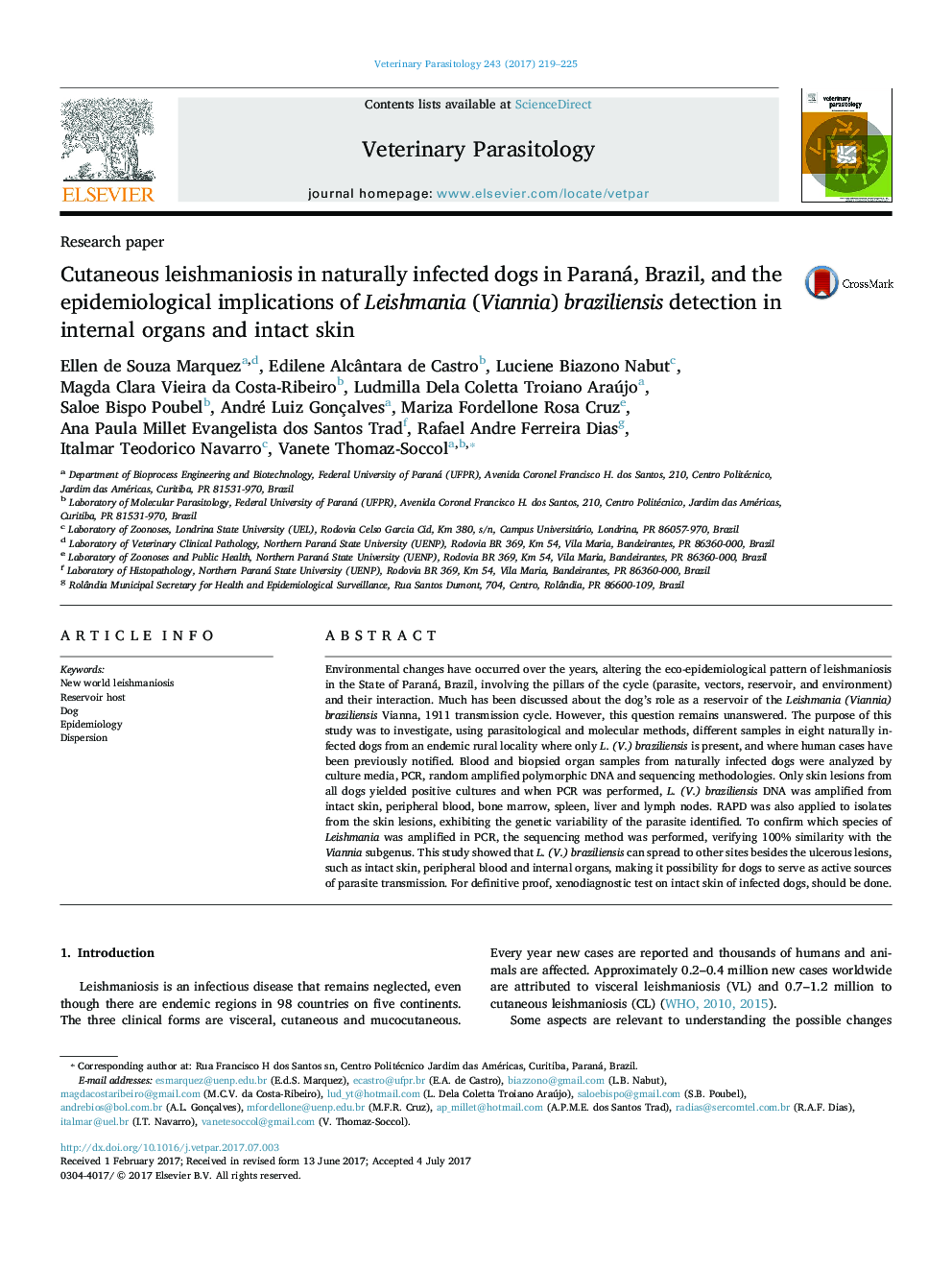| کد مقاله | کد نشریه | سال انتشار | مقاله انگلیسی | نسخه تمام متن |
|---|---|---|---|---|
| 5545602 | 1555633 | 2017 | 7 صفحه PDF | دانلود رایگان |

- Intact skin, blood, bone marrow and internal organs proved efficient for diagnosing CL by PCR and its variant.
- Leishmania braziliensis can spread to other sites: such as peripheral blood and internal organs.
- Dogs can play an important role as reservoir in CL.
- Asymptomatic dogs should be surveyed in areas where CL human cases have been reported.
Environmental changes have occurred over the years, altering the eco-epidemiological pattern of leishmaniosis in the State of Paraná, Brazil, involving the pillars of the cycle (parasite, vectors, reservoir, and environment) and their interaction. Much has been discussed about the dog's role as a reservoir of the Leishmania (Viannia) braziliensis Vianna, 1911 transmission cycle. However, this question remains unanswered. The purpose of this study was to investigate, using parasitological and molecular methods, different samples in eight naturally infected dogs from an endemic rural locality where only L. (V.) braziliensis is present, and where human cases have been previously notified. Blood and biopsied organ samples from naturally infected dogs were analyzed by culture media, PCR, random amplified polymorphic DNA and sequencing methodologies. Only skin lesions from all dogs yielded positive cultures and when PCR was performed, L. (V.) braziliensis DNA was amplified from intact skin, peripheral blood, bone marrow, spleen, liver and lymph nodes. RAPD was also applied to isolates from the skin lesions, exhibiting the genetic variability of the parasite identified. To confirm which species of Leishmania was amplified in PCR, the sequencing method was performed, verifying 100% similarity with the Viannia subgenus. This study showed that L. (V.) braziliensis can spread to other sites besides the ulcerous lesions, such as intact skin, peripheral blood and internal organs, making it possibility for dogs to serve as active sources of parasite transmission. For definitive proof, xenodiagnostic test on intact skin of infected dogs, should be done.
Journal: Veterinary Parasitology - Volume 243, 30 August 2017, Pages 219-225